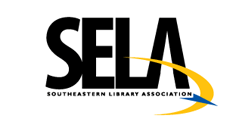Abstract
In the 21st century, libraries are well aware of the problem of hidden collections and so must seek by computer technology to make these “virtually” hidden collections available to our clients in a single, easy-to-use database. The Kentucky Library & Museum (KYLM), which opened in 1939, houses the special collections department of Western Kentucky University Libraries, and holds materials collected from 1919 to the present. Special collection libraries and archives such as the KYLM are known for their diversity of materials including manuscripts, ephemera, institutional records, maps, images, objects, audio and video recordings. These collections are of great research value to scholars across disciplines. Traditionally, access records for KYLM collections were produced in the analog forms of card files and legacy finding aids, thus limiting their use to in-house researchers. As the library’s OPAC developed, bibliographic records were created for books and periodicals housed in the Kentucky Library, as well as some collection level records for manuscript and university archives collections. However, museum objects, photographs and Folklife archives, as well as other non-book collections had never been entered into the library OPAC and were accessed only through paper finding aids. These roadblocks to the collected knowledge of the KYLM primary sources limited the use of our intellectual capital and the production of new intellectual property.
Publication Date
Spring 2010
